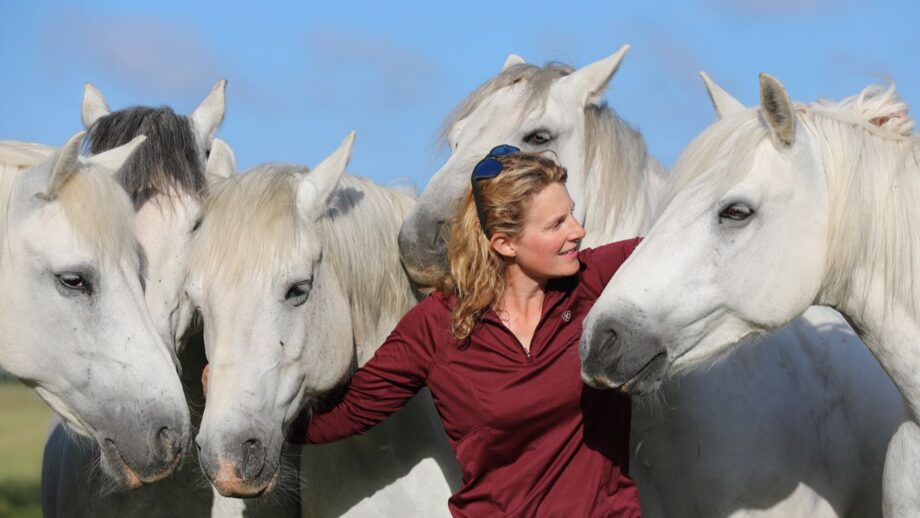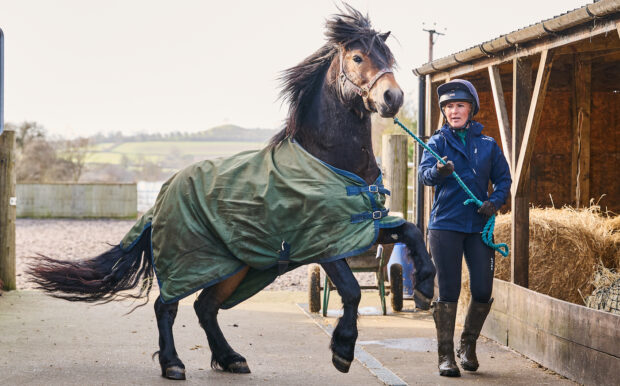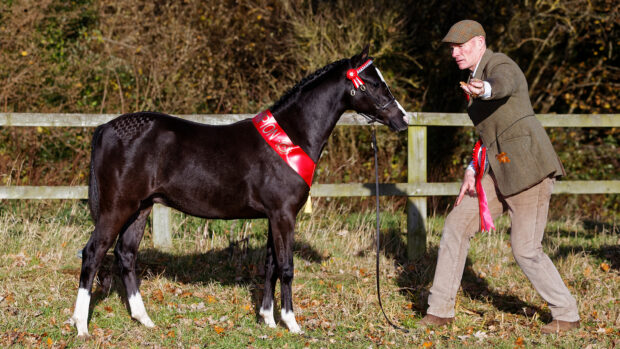What is groundwork?
Groundwork can include any sort of training you might undertake with your horse from the ground rather than under saddle. It includes in-hand work, lungeing and long-reining, as well as techniques like liberty training and horse agility. Almost all young horse trainers will use groundwork as part of their process of starting young horses under saddle, even if they don’t refer to it as such.
When we talk about groundwork, this doesn’t mean simply leading horses in and out of the field, handling them on the yard and all the everyday chores that are part and parcel of managing horses. However, groundwork can certainly help with horses that are tricky to handle day to day, and enable humans to be better at reading and giving signals. It can help re-establish basics by working on the relationship between horse and handler.
But groundwork per se is more about a specific, unmounted training session working with the horse to build the bond between you, fine-tuning your confidence and trust in each other. It enables you not only to watch the horse as he moves physically, to help identify any stiffness or potential problems, but to learn to read body language and how the horse behaves and reacts. Groundwork has often been dubbed as “natural horsemanship”, but most people who practise it regularly would simply call it horsemanship, an integral part of training horses.
There are a wide range of horse training systems that use groundwork as a primary part of their system. Some of the best well-known include those developed by Warwick Schiller (Attuned Horsemanship), Tristan Tucker (TRT) and Pat and Linda Parelli (Parelli Natural Horsemanship), but there are many others.
Each system is different. Some are based on positive reinforcement, some focus primarily on building the relationship. There are those with roots in classical dressage, and those based on liberty, while traditional training from the ground, such as long-lining and lungeing will use elements of some of these systems, too.
What horses can benefit from groundwork?
Groundwork is beneficial in a variety of situations.
1. It’s often the first introduction a young horse has to training and learning to negotiate the human world as it can be introduced before they are mature enough for ridden work. When starting a horse, groundwork is also a great opportunity to teach the young horse basic cues and it provides a good base to start ridden work from.
2. It can be especially useful for horses and riders that struggle to communicate well with each other. Perhaps you feel they don’t understand what you are asking them to do from the saddle, or they are displaying some sort of behavioural issue. Many people start looking into groundwork hoping for a “cure” for horses that nap, won’t load and so on.
Groundwork can help with mutual understanding, as well as the horse’s proprioception and awareness of you.
3. For horses who are returning from injury and need to work through a rehabilitation programme, groundwork is a really useful addition to your routine. It will help focus the fresh horse by stimulating his brain and encouraging his focus on you as the handler – rather than being reactive to things around him.
It also gives variety when you have many weeks of walking ahead of you, as you can create new challenges, such as poles, cones, new commands, even liberty work, as your rehab programme allows. And it allows the horse to work without any weight directly on their back.
4. It adds variety to your training, giving you and your horse different options for a work session. This is great for engaging horses that are perhaps sour of the school, or showing signs that they are finding their regular work monotonous.
5. Almost any horse can do ground work sessions, even those that cannot be ridden (providing they’re not on full box rest) whether due to injury or age, or because they are too small for the available riders.
6. Groundwork can also be useful when the rider is injured – in some cases individuals are able to work their horse from the ground and maintain their horse’s training and some sort of fitness plan if they can’t do so in the saddle.
What are the benefits of groundwork?
Groundwork is a useful way of establishing communication and connection with horses of any age. Working with the horse from the ground gives the rider/trainer the chance to visually assess the horse’s natural movement patterns (how they prefer to move their body) without the influence of the rider on board. This can provide useful information that can then be used to help formulate work in-hand, and under saddle, to improve a horse’s way of going.
The horse and handler can establish trust through groundwork and set useful boundaries around personal space, which can make the horse safer to be around. It can also be used as part of a training or rehabilitation programme to improve physical attributes, such as strength, coordination, flexibility and proprioception.
Horses with problems such as separation anxiety, loading, rearing, food aggression and so on, can benefit from groundwork to help change their pathways of behaviour.
In-hand dressage training is popular in Europe, but knowledge and uptake in the UK is increasing. Specific exercises, such as lateral work, can be worked on from the ground and some riders and trainers use groundwork when teaching new movements, such as turn on the forehand or leg yielding. Piaffe is also often introduced to the horse from the ground, allowing the horse to build the necessary strength for the movement without the weight of a rider on board.
It’s also a handy session for those who don’t have time to do a full ridden session. There is less kit involved, so less time spent tacking up, and there is less essential grooming.
In as little as 10 minutes you can work on a simple exercise that stimulates the brain and enhances the bond between you. In fact, little and often is a great way to build mutual understanding and good habits.
You may also be interested to read…

Interested in working horses at liberty? Here’s what you need to know about its history, approaches and best practice from expert horse trainers

How walk work over poles benefits equine rehab and strength

Subscribe to Horse & Hound magazine today – and enjoy unlimited website access all year round





